Table of Content
1. Brief History:
Cafe racers were first launched in the 1950s. Even the style of modern café racers is inspired by the original café racers of the 1950s. In the 1950s, there was a popular trend of compact standard/naked motorcycles. But this type of motorcycle did not lose popularity over time as most motorcycle companies today manufacture café racers.
Café racers actually originated in London, created by young British riders who could not afford a car. They stripped off unneeded or extra motorcycle parts, tuned the engine, and made other adjustments. Thus, the first café racers were born.
Nowadays, there are many fans of café racers. Motorcycle companies have various café rider series but most of them are too expensive for the average user or don’t fit their preferred style. Thus, many people prefer to build their own café racers by transforming an original motorcycle. There are steps to changing a standard motorcycle into a café racer.
Before you start, it is important to know that café racers differ from other motorcycles for the following reasons:
- Reduced weight
- Lower handlebars allow better handling
- Potentially more power from the engine
- A lower solo seat for the rider. However, the solo seat is optional
1.1. Before you start building your café racer, here are a few helpful tips to remember:
- Make sure to have a proper toolkit or it will be difficult to remove or attach components.
- Make sure to have a motorcycle stand to hold your vehicle still to make disassembling easier.
This is optional but still recommended.
2. Find an Old Motorcycle:
You first need to pick a motorcycle to serve as the base. It can be any old bike from the 1980s or 1990s, so long as it fits your needs.
Before you select a motorbike, make sure to check the following:
- Make sure to pick a motorcycle with a working engine. Its physical condition is not a primary concern, but a malfunctioning engine can be costly to repair, even more so to get a new one.
- Buy a motorcycle that is affordable and in relatively good condition since it can be expensive to restore a motorcycle.
- Try to pick a motorcycle with a 100 cc or larger engine capable of high horsepower.
The motorcycle depicted below is the 1980 Yamaha XS 850. Built with a powerful engine and available at a reasonable price, this is a good option to turn into a café racer.

3. Strip the Motorcycle:
When you strip down your motorcycle, all the parts are taken out so it is easier to thoroughly examine the vehicle for any signs of internal faults.
Here are a few tips to remember when stripping the motorcycle:
- Take off the parts very carefully, don't pull them off with too much force or you risk damaging the parts.
- Place every nut and bolt in a labeled box so that they are organized and easy to find. Storing every nut and bolt in a secure place will keep them from getting lost.
- Never get rid of any extra wires, parts, or equipment after they are removed since you never know when you may need them again in the future.
4. Appearance:
A café racer’s appearance is the most appealing trait of this type of motorcycle. When every component is taken off, it is possible to modify each of them to improve your vehicle’s look. Here is a list of features you can modify to change your motorcycle’s look.

4.1. Paint
Any removed parts can be painted in any color scheme, especially the fuel tank, motorcycle frame, front shocks, and exhaust pipe.
4.2. Seat:
Café racers mostly come with solo seats that are smaller compared to other standard motorcycles. To attach a solo seat, it has to be placed onto a small hoop that is available on the market.
Cutting and welding might be necessary to install the small hoop on your motorcycle. After welding on the new hoop, it should look like this:
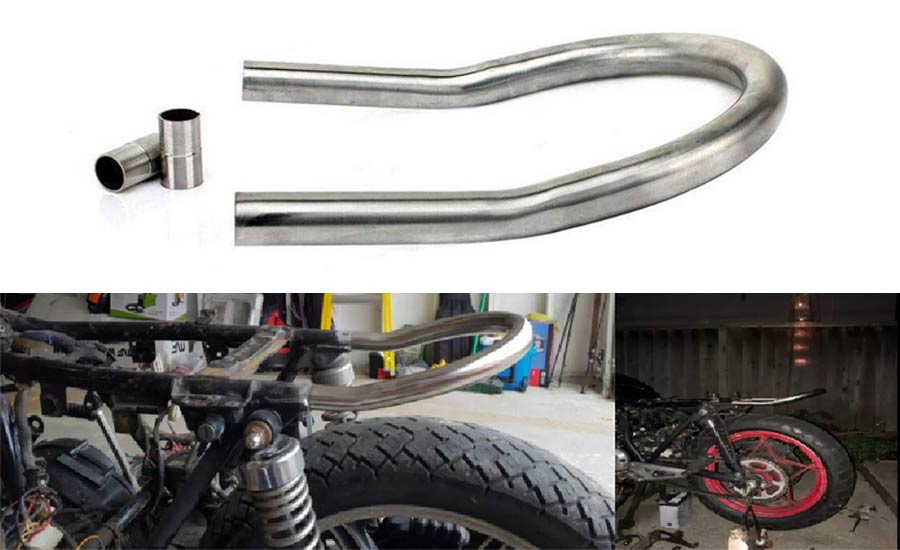
A standard café racer Seat should look like this:
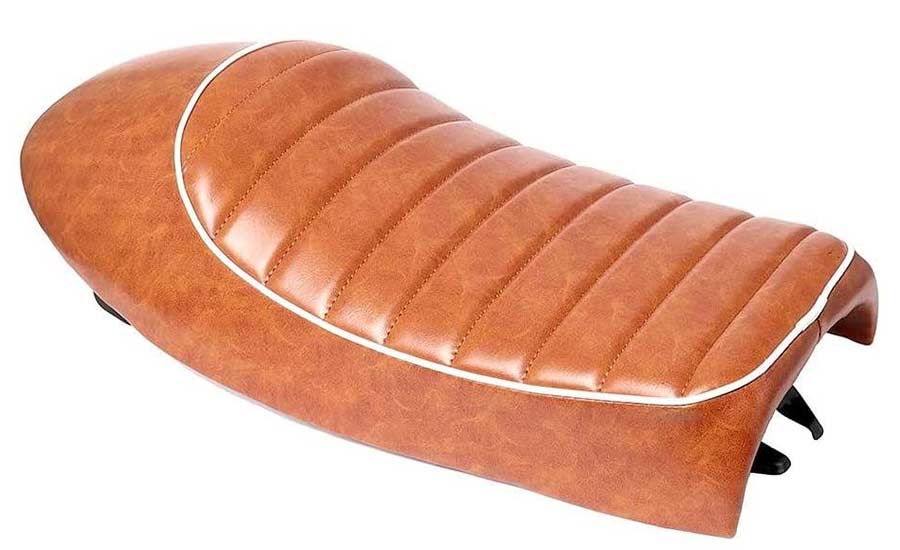
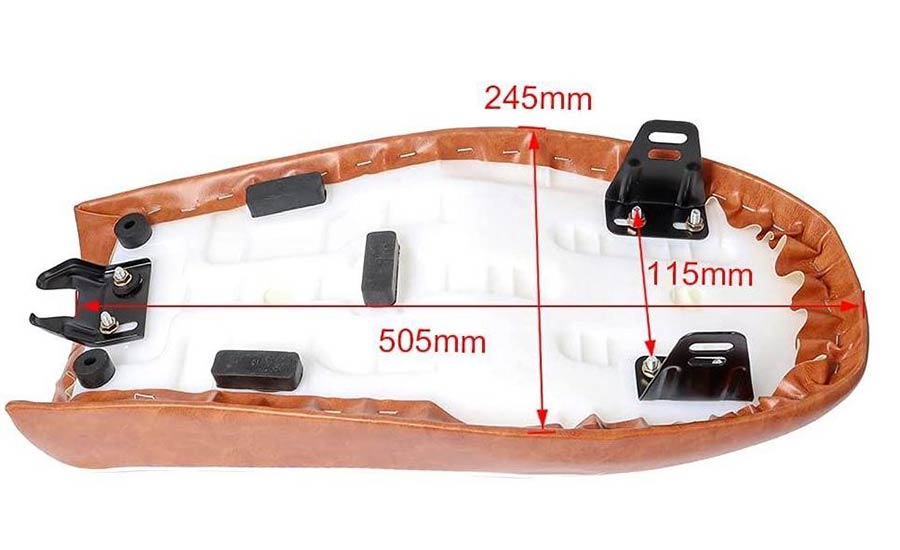
4.3. Tires:
Café racers usually are fitted with high-profile tires that are slightly wider than standard motorcycle tires. While the alloy rims are more durable, they do cost more than standard spoked wheels.
This is what a standard motorcycle tire looks like:
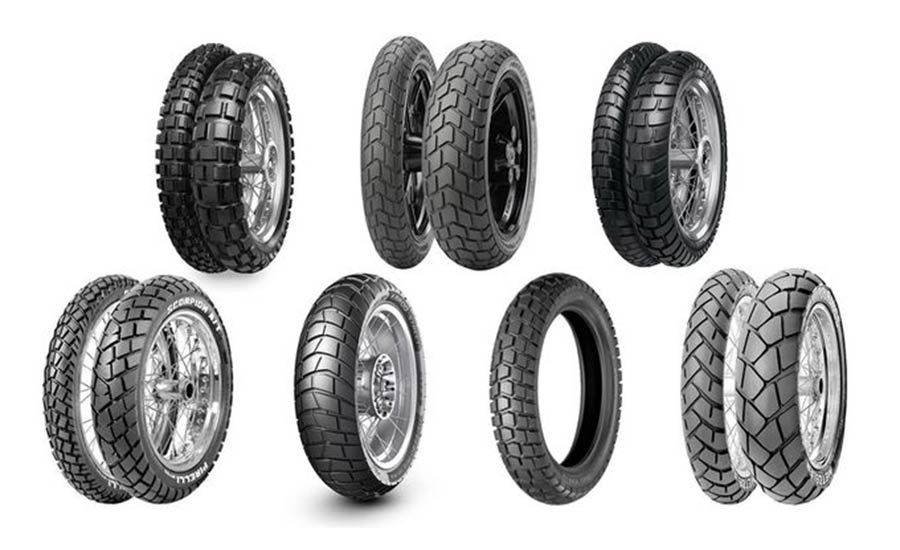
This is what a café racer tire looks like:
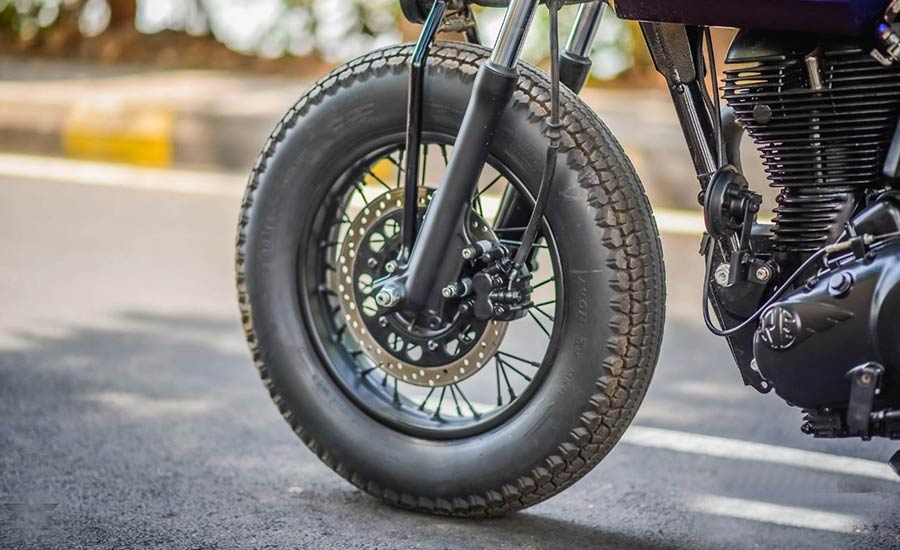
4.4. Exhaust:
Examine the exhaust pipe to see if there are any holes along the cylindrical surface. If the exhaust pipe is in good condition, only the back of the exhaust will need to be replaced. The exhaust pipe’s shape and style depend on the rider’s preferences since there are different kinds of exhaust pipes available on the market. It is possible for the old exhaust pipe to be welded with the new exhaust.
This is what the new exhaust may look like:
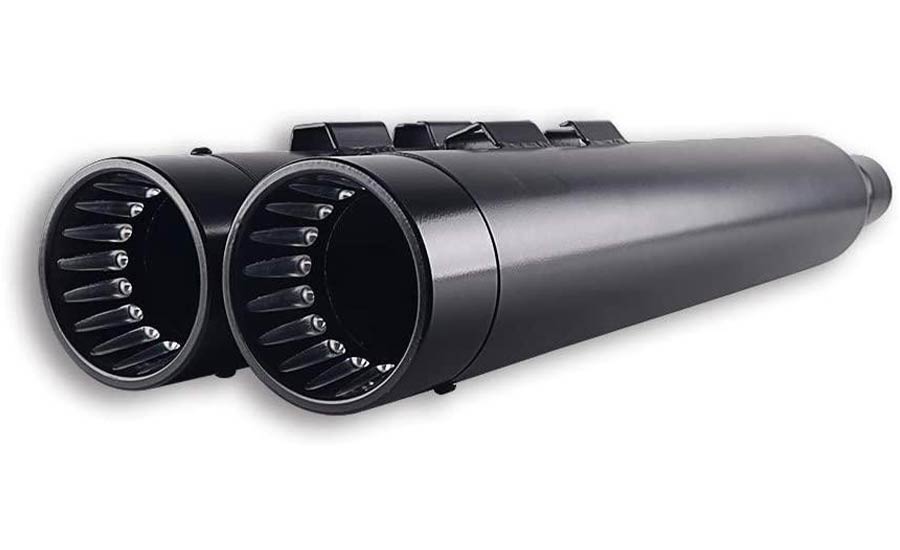
After welding it with the old pipe, the exhaust should look like this:

4.5. Suspension:
Café racers have their rear suspensions positioned a bit lower than standard motorcycles. Meanwhile, the front shocks may function like normal motorcycle shocks or customized shocks depending on the rider. It is possible to fit a mono or dual shock at the rear.
Standard rear suspension for café racers may look like this:
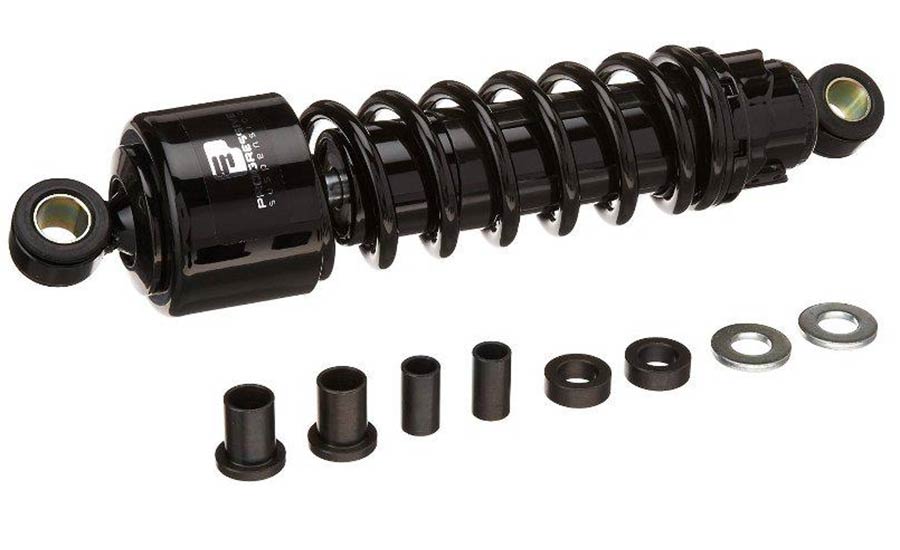
However, if the motorcycle frame is designed for dual shocks and you wish to install a mono-shock, you may need to make a few changes to the motorcycle frame to make this possible.
4.6. Tank:
Café racers have a small fuel tank. It is possible to customize your café racer’s fuel tank by painting over it or buying a fuel tank of a different size to match the market or online aftermarket stores.
A customize painted fuel tank may look like this:

Unpainted fuel tanks are also available at aftermarket stores, being easy to customize if the rider wants to give it a custom look.
4.7. Handlebars:
Café racers have lower handlebars compared to other types of motorcycles . However, it is possible for riders to choose and install any type of handlebars. Below is a visual depiction of how standard motorcycle and café racer handlebars are different:

The most popular types of café racer handlebars are listed below:
The given handlebars have different shapes but all of them have the same basic feature that they are lower than a standard motorcycle’s handlebar.
U-Shape handlebar:
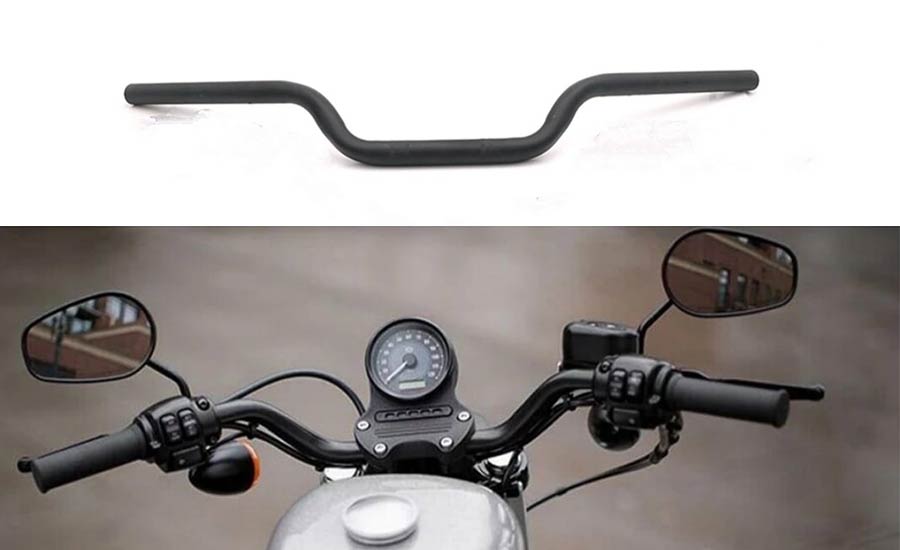
U-Shape handlebars with grips are more bend in shape.
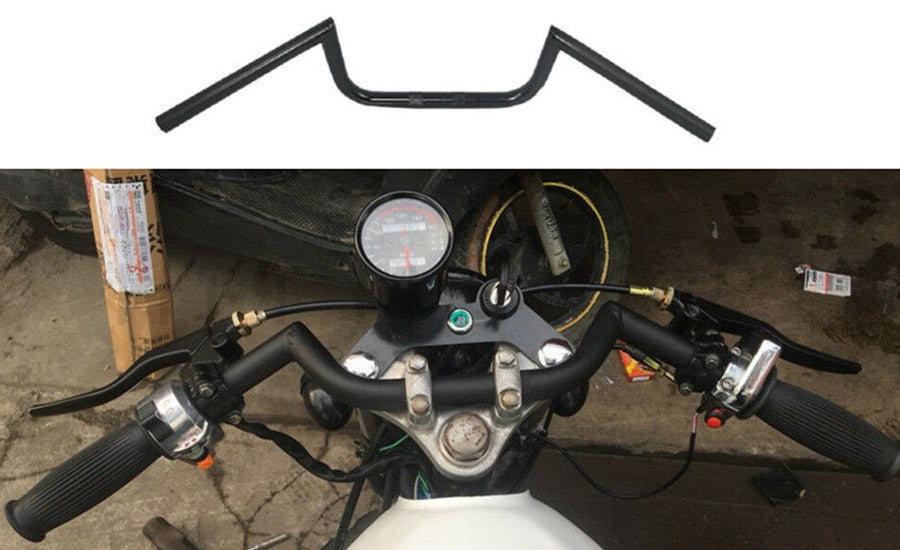
Simple grip rods that are attached to the handle plate.

4.8. Fenders:
Standard café racers do not have a rear fender as a standard feature. Any rear fenders you find on the market will be much smaller than the standard version. Though café racers have front fenders as a stock feature, they are also smaller than the standard version.
A café racer’s front fender may look like this:

Most café racer rear fenders are not attached separately; instead, they are attached to the seat.
The common types of café racer rear fenders include the following:
This type of fender is attached to the seat and leaves the tire more open.

This type of fender is separately attached to the frame of the motorcycle.
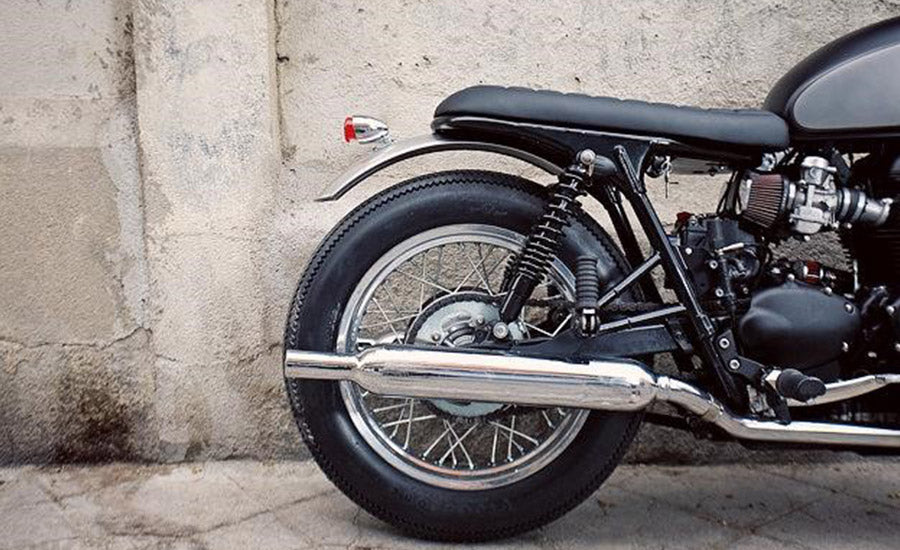
This type of fender can either be separately attached or can be welded with the frame of the motorcycle but it is smaller in length.

This type of fender is attached to the inner side of the frame which prevents the frame of the motorcycle from mud.
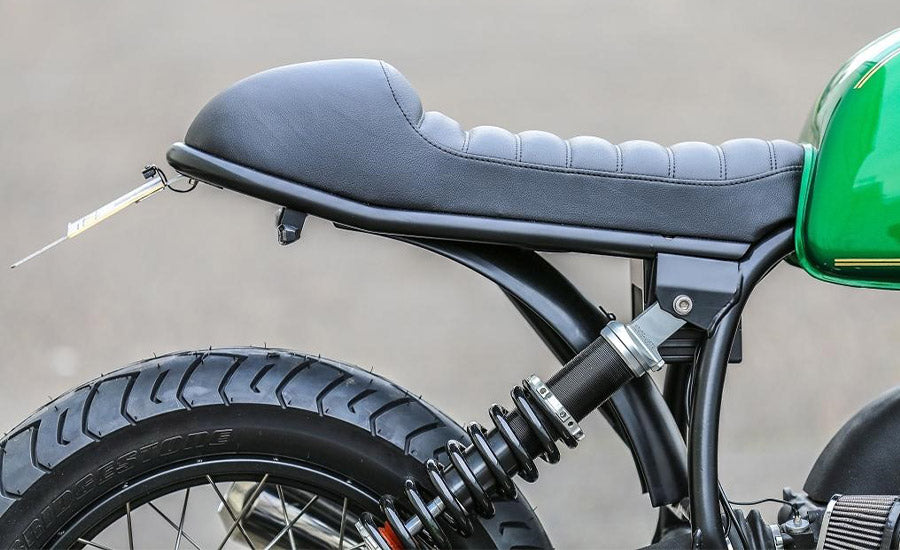
4.9. Lights:
Café racers are fitted with a circular headlight and small, circular indicators. Meanwhile, the kind of tail light used will be determined by the rider. Popular choices among café racers are the strip tail light or circular tail light.
The most common café racer headlights are:
Simple and basic circular headlight with halogen or led bulb.
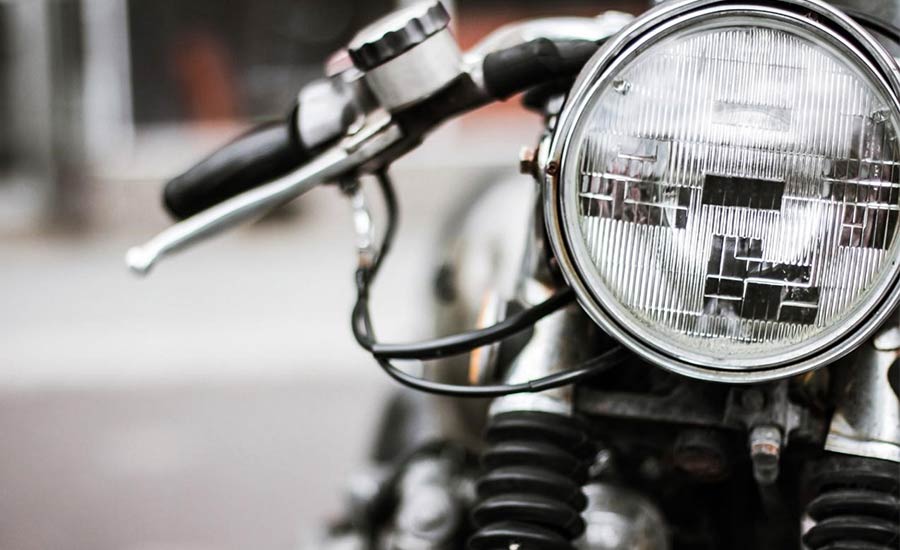
Similar to the first type except the rider makes different shapes on the glass of the headlight.
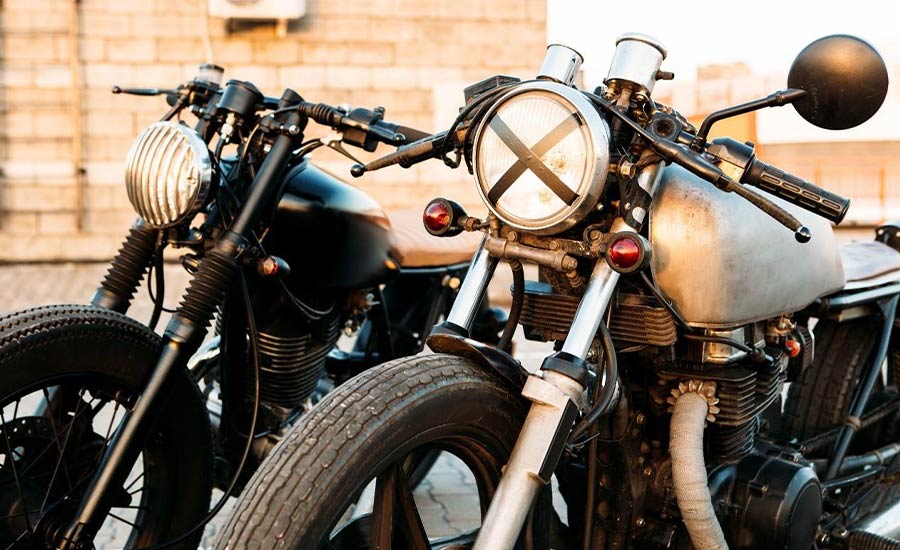
The most common café racer tail lights are:
Commonly used simple small circular backlight, most rider use this type of backlight on their cafe racer.

This is a strip-led light, that provides a minimalistic look to the back of the motorcycle.

5. Performance:
5.1. Engine:
It is better to regularly check the engine’s condition and do repairs if necessary. A common problem with older motorcycle engines is that the ring piston can get worn out. A broken ring piston results in dark smoke billowing out due to oil seeping and mixing with the gas in the carburetor. This kind of mechanical issue will cause the oil to run out quicker and make the engine run less efficiently.
5.2. Carburetor:
Carburetors mix fuel and air in a proper ratio to facilitate internal combustion when the engine is running. For café racers, the filter is on the side of the carburetor instead of being hidden by side panels.
Cleaning the carburetor of the motorcycle is necessary because if the carburetor does not have enough intake air or is unable to properly mix fuel and air, the internal combustion will not be good and the motorcycle will deliver enough power in the output. The engine will have to work more to give the output as the breathing of the engine is blocked.
The standard air filter on café racers may look like this:
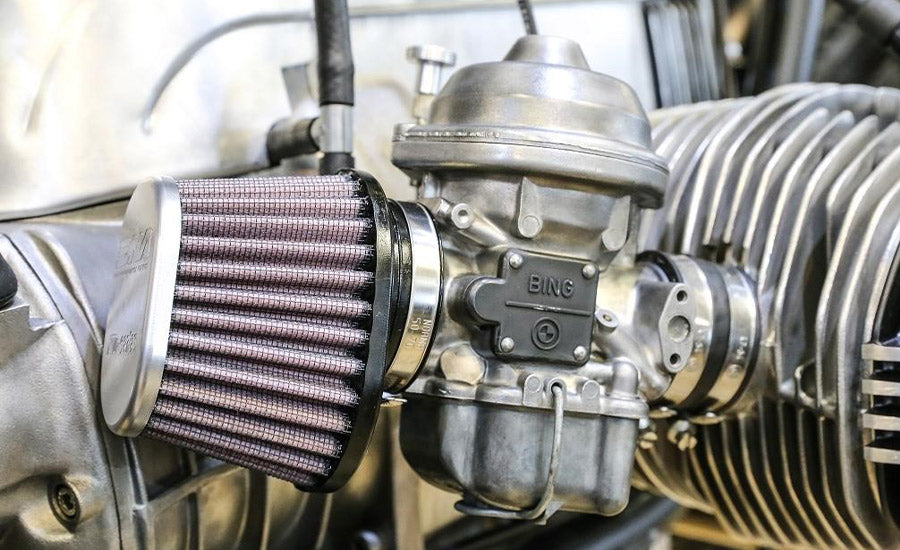
This video shows how to clean a motorcycle carburetor:
6. Conclusion:
Many companies like HONDA, Triumph, KAWASAKI, YAMAHA, Ducati, BMW, etc. manufacture café racers. However, they can be expensive, which is why people prefer to build CAFÉ RACERS on their own, providing the parts and budget themselves. CAFÉ RACERS weigh less than other types of motorcycles. Therefore, café racers do not have extra accessories like SADDLEBAGS, TANK BAGS, SISSY BAR BAGS, SISSY BAR, CRASH BARS, LUGGAGE RACKS, TRUNK, HANDLEBARS BAGS, SEATS, etc. Motorcycle accessories improve the riding experience and can be bought from ONLINE STORES.













Leave a comment
All comments are moderated before being published.
This site is protected by hCaptcha and the hCaptcha Privacy Policy and Terms of Service apply.